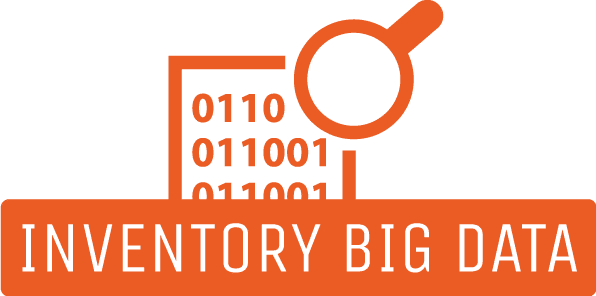Data of Environmental Health & Safety Manager
Description
As an Environmental Health & Safety Manager, Kate is responsible for ensuring that the company she works for is complying with all relevant health, safety, and environmental regulations. Her role involves developing and implementing policies and procedures to ensure the safety and well-being of employees and the environment, as well as conducting risk assessments, identifying hazards, and providing training to employees.
Kate’s KPIs as Environment Health & Safety Manager:
- Incident Rate: This KPI measures the number of accidents, injuries, and illnesses that occur in the workplace. The EHS Manager can use this data to identify trends and implement preventive measures to reduce the number of incidents.
- Compliance Rate: This KPI measures the degree to which the organization complies with environmental, health, and safety regulations. The EHS Manager can use this data to ensure that the organization is meeting legal requirements and avoiding penalties.
- Hazard Identification Rate: This KPI measures the number of hazards identified and addressed in the workplace. The EHS Manager can use this data to identify potential risks and implement corrective actions.
- Training Completion Rate: This KPI measures the percentage of employees who have completed mandatory safety training. The EHS Manager can use this data to ensure that all employees are properly trained and equipped to work safely.
- Waste Reduction Rate: This KPI measures the amount of waste produced by the organization and the percentage that is recycled or reused. The EHS Manager can use this data to identify opportunities for waste reduction and cost savings.
- Energy Consumption Rate: This KPI measures the amount of energy consumed by the organization and the percentage that comes from renewable sources. The EHS Manager can use this data to identify opportunities for energy efficiency and cost savings.
- Near-Miss Reporting Rate: This KPI measures the number of near-miss incidents that are reported in the workplace. The EHS Manager can use this data to identify potential hazards and implement corrective actions before an incident occurs.
Overall, KPIs should be aligned with the organization’s strategic objectives and should be regularly reviewed and updated to ensure that they remain relevant and meaningful.
Kate’s SIPOC as Environment Health & Safety Manager
here’s an example of a SIPOC for an Environmental Health & Safety Manager:
- Supplier: Internal Departments (e.g. Operations, Facilities, HR), External Regulatory Agencies
- Inputs: Workplace Policies, Environmental Regulations, Incident Reports, Employee Safety Concerns
- Process: Environmental Health & Safety Management System (Includes Risk Assessments, Safety Audits, Training Programs, Emergency Response Plans)
- Outputs: Safety Policies and Procedures, Risk Management Reports, Incident Reports, Training Programs
- Customers: Employees, Regulatory Agencies, Customers, Public
As an Environmental Health & Safety Manager, the primary responsibility is to ensure the safety of all employees and compliance with environmental regulations. Here’s how the SIPOC breaks down:
Supplier: The internal departments of the organization, such as Operations, Facilities, HR, and external regulatory agencies, such as OSHA, EPA, and local environmental agencies.
Inputs: The inputs to the EH&S management system include workplace policies, environmental regulations, incident reports, and employee safety concerns. These inputs help to identify potential hazards and risks, as well as ensure that the organization is compliant with relevant regulations.
Process: The EH&S management system includes a range of processes, including risk assessments, safety audits, training programs, and emergency response plans. These processes are designed to prevent accidents and injuries, minimize the impact of incidents that do occur, and ensure that the organization is prepared to respond to emergencies.
Outputs: The outputs of the EH&S management system include safety policies and procedures, risk management reports, incident reports, and training programs. These outputs are used to communicate safety information to employees, regulatory agencies, customers, and the public, and to demonstrate compliance with relevant regulations.
Customers: The customers of the EH&S management system include employees, regulatory agencies, customers, and the public. The EH&S Manager is responsible for ensuring that all stakeholders are informed about the organization’s safety policies and procedures, and that any incidents or accidents are handled appropriately.
Role of data
As an Environmental Health & Safety (EHS) Manager, one of your primary responsibilities is to ensure that your organization complies with environmental regulations and safety standards. To achieve this goal, data plays a crucial role.
Data can be used in a variety of ways to help EHS Managers make informed decisions. One of the most important ways data is used is to identify potential hazards and risks. By analyzing data on accidents, incidents, and near misses, EHS Managers can identify trends and patterns that can help them identify potential hazards and risks in the workplace. For example, if data shows that a particular type of equipment is responsible for a high number of accidents, EHS Managers can take steps to address this issue, such as providing additional training or replacing the equipment.
Data can also be used to measure the effectiveness of EHS programs. By tracking key performance indicators (KPIs), such as the number of incidents or the amount of waste generated, EHS Managers can determine whether their programs are achieving their intended goals. This information can be used to make adjustments and improvements to the programs as needed.
In addition, data can be used to demonstrate compliance with environmental regulations and safety standards. By maintaining accurate records of inspections, audits, and other compliance activities, EHS Managers can provide evidence of their organization’s compliance with applicable regulations and standards.
Finally, data can be used to communicate with stakeholders. By presenting data in a clear and concise manner, EHS Managers can help stakeholders understand the organization’s performance in relation to EHS goals and objectives. This information can be used to build trust and credibility with stakeholders, such as regulators, customers, and investors.
In conclusion, data plays a critical role in the work of Environmental Health & Safety Managers. By using data to identify hazards and risks, measure program effectiveness, demonstrate compliance, and communicate with stakeholders, EHS Managers can help ensure that their organizations operate safely and responsibly.
Additional information
| Publication |
|---|




